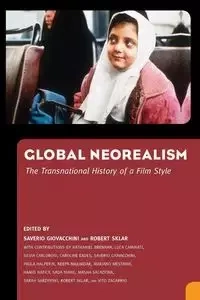Global Neorealism
Global Neorealism
EAN: 9781617038259
Symbol
910FKZ03527KS
Rok wydania
2013
Elementy
284
Oprawa
Miekka
Format
15.2x22.9cm
Redakcja
Giovacchini Saverio
Język
angielski

Bez ryzyka
14 dni na łatwy zwrot

Szeroki asortyment
ponad milion pozycji

Niskie ceny i rabaty
nawet do 50% każdego dnia
Niepotwierdzona zakupem
Ocena: /5
Symbol
910FKZ03527KS
Kod producenta
9781617038259
Rok wydania
2013
Elementy
284
Oprawa
Miekka
Format
15.2x22.9cm
Redakcja
Giovacchini Saverio
Język
angielski

Intellectual, cultural, and film historians have long considered neorealism the founding block of post-World War II Italian cinema. Neorealism, the traditional story goes, was an Italian film style born in the second postwar period and aimed at recovering the reality of Italy after the sugarcoated moving images of Fascism. Lasting from 1945 to the early 1950s, neorealism produced world-renowned masterpieces such as Roberto Rossellini's Roma, città aperta (Rome, Open City, 1945) and Vittorio De Sica's Ladri di biciclette (Bicycle Thieves, 1947). These films won some of the most prestigious film awards of the immediate postwar period and influenced world cinema.
This collection brings together distinguished film scholars and cultural historians to complicate this nation-based approach to the history of neorealism. The traditional story notwithstanding, the meaning and the origins of the term are problematic. What does neorealism really mean, and how Italian is it? Italian filmmakers were wary of using the term and Rossellini preferred "realism." Many filmmakers confessed to having greatly borrowed from other cinemas, including French, Soviet, and American.
Divided into three sections, Global Neorealism examines the history of this film style from the 1930s to the 1970s using a global and international perspective. The first section examines the origins of neorealism in the international debate about realist esthetics in the 1930s. The second section discusses how this debate about realism was "Italianized" and coalesced into Italian "neorealism" and explores how critics and film distributors participated in coining the term. Finally, the third section looks at neorealism's success outside of Italy and examines how film cultures in Latin America, Asia, and the United States adjusted the style to their national and regional situations.
EAN: 9781617038259
EAN: 9781617038259
Niepotwierdzona zakupem
Ocena: /5
Zapytaj o produkt
Niepotwierdzona zakupem
Ocena: /5
Napisz swoją opinię

